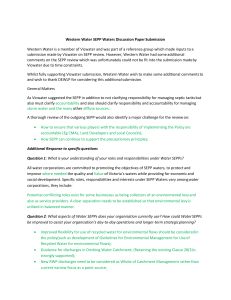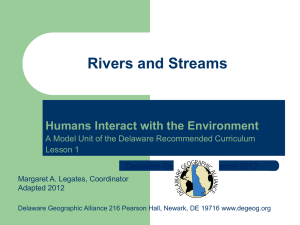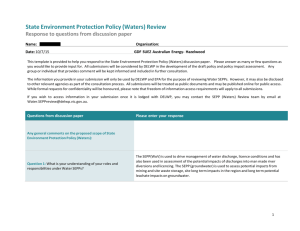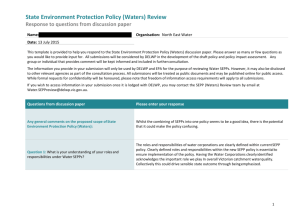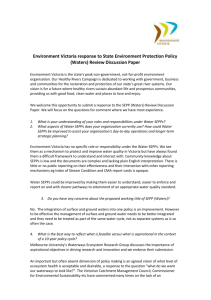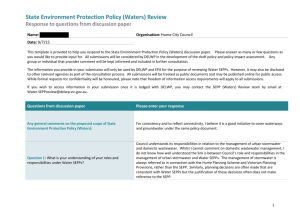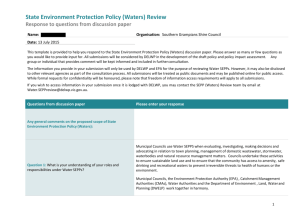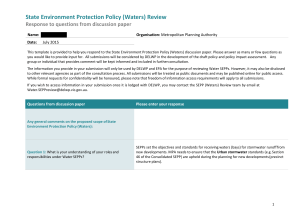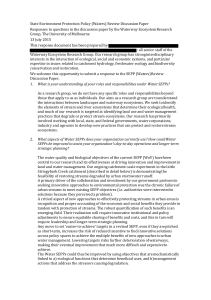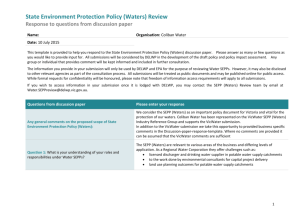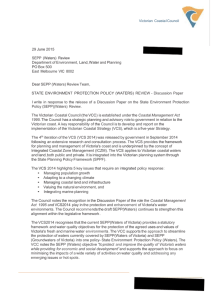I Wallis (Accessible version) [MS Word Document
advertisement
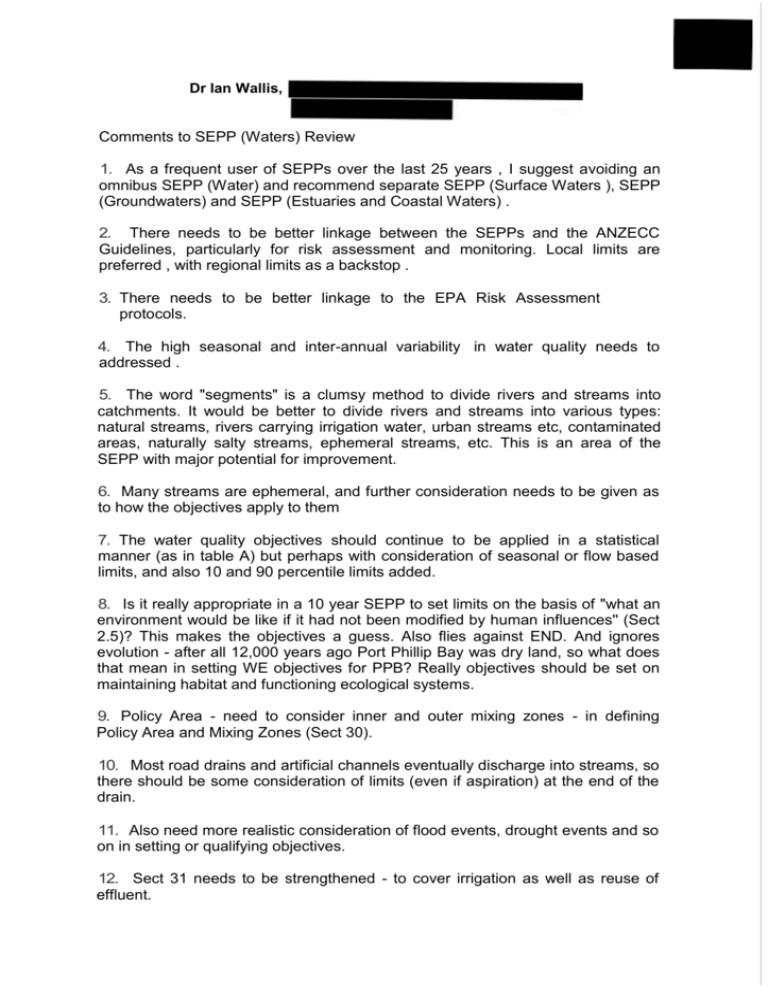
Dr lan Wallis, Comments to SEPP (Waters) Review 1. As a frequent user of SEPPs over the last 25 years , I suggest avoiding an omnibus SEPP (Water) and recommend separate SEPP (Surface Waters ), SEPP (Groundwaters) and SEPP (Estuaries and Coastal Waters) . 2. There needs to be better linkage between the SEPPs and the ANZECC Guidelines, particularly for risk assessment and monitoring. Local limits are preferred , with regional limits as a backstop . 3. There needs to be better linkage to the EPA Risk Assessment protocols. 4. The high seasonal and inter-annual variability in water quality needs to addressed . 5. The word "segments" is a clumsy method to divide rivers and streams into catchments. It would be better to divide rivers and streams into various types: natural streams, rivers carrying irrigation water, urban streams etc, contaminated areas, naturally salty streams, ephemeral streams, etc. This is an area of the SEPP with major potential for improvement. 6. Many streams are ephemeral, and further consideration needs to be given as to how the objectives apply to them 7. The water quality objectives should continue to be applied in a statistical manner (as in table A) but perhaps with consideration of seasonal or flow based limits, and also 10 and 90 percentile limits added. 8. Is it really appropriate in a 10 year SEPP to set limits on the basis of "what an environment would be like if it had not been modified by human influences'' (Sect 2.5)? This makes the objectives a guess. Also flies against END. And ignores evolution - after all 12,000 years ago Port Phillip Bay was dry land, so what does that mean in setting WE objectives for PPB? Really objectives should be set on maintaining habitat and functioning ecological systems. 9. Policy Area - need to consider inner and outer mixing zones - in defining Policy Area and Mixing Zones (Sect 30). 10. Most road drains and artificial channels eventually discharge into streams, so there should be some consideration of limits (even if aspiration) at the end of the drain. 11. Also need more realistic consideration of flood events, drought events and so on in setting or qualifying objectives. 12. Sect 31 needs to be strengthened - to cover irrigation as well as reuse of effluent. 13. Many of the suggestions for exploration listed on pp 22 and 23 of the review document seem well worth exploring. 14. The Scientific Panel could be useful if the members are actually involved in the measurement and assessment of water quality and ecological conditions in actual rivers and estuaries in Victoria. However to achieve a SEPP that reflects END over the next 10 years, the membership also needs to include some representation of the social and economic components of END. Dr Ian Wallis
